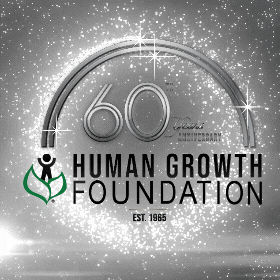軟骨發育不全
軟骨發育不全是不成比例的生長遲緩的最常見形式,可在出生時和妊娠 24 週後透過超音波識別。
軟骨發育不全是一種影響嬰兒骨骼生長的先天缺陷。 出生缺陷是出生時存在的健康狀況。出生缺陷會改變身體一個或多個部位的形狀或功能。它們可能會導致整體健康、身體發育或身體運作出現問題。
隨著嬰兒的成長,身體大部分部位的軟骨組織通常會變成骨骼。但如果嬰兒患有軟骨發育不全,手臂和腿等部位的軟骨就不會按照應有的方式變成骨頭。軟骨發育不全是侏儒症(也稱為小矮人)的常見原因,侏儒症是指一個人非常矮(成人身高不到 4 英尺 10 英寸)的病症。
軟骨發育不全影響大約一萬五千分之一到四萬分之一的嬰兒。大多數患有軟骨發育不全的嬰兒都會有正常的壽命,但少數可能會出現嚴重的骨骼問題,導致死亡。
軟骨發育不全是什麼原因造成的?
基因改變(也稱為突變)會導致軟骨發育不全。基因是身體細胞的一部分,儲存著身體生長和工作方式的指令。基因從父母傳給孩子。基因改變是基因指令的改變。這些變化可能導致出生缺陷和其他健康狀況。
大多數患有軟骨發育不全的嬰兒的父母並不患有軟骨發育不全。當卵子或精子中發生隨機基因變化並結合在一起產生嬰兒時,就會發生這種情況。
如果您或您的伴侶患有軟骨發育不全,您可能會將其遺傳給您的寶寶。如果你們當中只有一人患有此病,則你們的寶寶有二分之一(50%)的機會患有此病。如果您和您的伴侶都患有軟骨發育不全,則:
-
您的寶寶有二分之一的機會(50%)患有此病
-
您的寶寶有四分之一 (25%) 的機會不會出現這種情況
-
您的寶寶有四分之一的機會(25%)患有可導致死亡的嚴重軟骨發育不全
如果您或您的伴侶患有軟骨發育不全,或者您是患有軟骨發育不全的孩子的父母,請與遺傳諮詢師討論這種情況。遺傳諮詢師是經過訓練的人員,可以幫助您了解基因、出生缺陷和其他醫療狀況如何在家庭中發生,以及它們如何影響您的健康和寶寶的健康。要尋找遺傳諮詢師,請詢問您的提供者或聯絡國家遺傳諮詢師協會。


軟骨發育不全患者有哪些身體特徵?
患有軟骨發育不全的人通常有:
-
身高矮
-
上臂和大腿短(與前臂和小腿相比)
-
頭大、額頭大、鼻樑平坦
-
牙齒問題,包括牙齒擁擠或彎曲
-
腳寬、扁平、腳趾短、手指短
-
三叉戟手,中指和無名指之間有多餘空間的情況
-
肌張力弱。肌張力較弱的嬰兒可能會延遲達到發育里程碑,例如坐下、站立和行走。
-
弓腿。這是當腿在大腿和腳踝之間向外彎曲時。羅圈腿會導致疼痛和行走困難。如果彎曲或疼痛嚴重,手術可以修復羅圈腿。
軟骨發育不全會導致哪些健康問題以及如何治療?
患有軟骨發育不全的人可能會出現一系列健康問題,因此帶您的寶寶去看醫療保健提供者進行常規嬰兒健康檢查非常重要。
在這些檢查中,寶寶的照護人員可以將寶寶的身高、體重和頭部尺寸與其他患有軟骨發育不全的寶寶進行比較。這可以幫助寶寶的照護人員及早發現並治療一些問題。
軟骨發育不全患者通常有以下健康問題:
-
呼吸暫停。這是指嬰兒停止呼吸 15 至 20 秒或更長。患有呼吸暫停和其他呼吸問題的嬰兒可能需要手術切除扁桃體和腺樣體(喉嚨附近的淋巴組織)。
-
重複耳部感染。有些患有軟骨發育不全的嬰兒需要耳管。這些是放置在耳朵中的小管,可讓空氣進入中耳,有助於降低耳部感染的機會。如果不治療,重複的耳部感染會導致聽力損失。
-
肥胖(嚴重超重)。健康飲食和積極活動可以幫助您的孩子在成長過程中保持健康的體重。
-
脊髓上端受壓。這是因為頭部和脊椎(脊椎)連接處的開口太小。脊髓受到擠壓(壓縮),導致呼吸困難。少數患有軟骨發育不全的嬰兒因壓迫而突然死亡(通常在睡眠期間)。如果需要,手術可以擴大開口以減輕脊髓的壓力。
-
椎管狹窄。椎管狹窄導致脊椎變窄,對神經和脊髓造成壓力。這可能會導致腰痛、排尿問題和虛弱、腿部刺痛和疼痛。當軟骨發育不全患者是青少年或成人時,通常會出現症狀。手術可以減輕脊髓的壓力。
-
腦積水(大腦中積水)。寶寶的醫療服務提供者會定期檢查寶寶的頭部,以幫助及早發現腦積水。在某些情況下,外科醫生需要排出嬰兒大腦中多餘的液體。
-
脊椎後凸(上背部的小駝峰)。由於肌張力差,嬰兒可能會出現駝背,但通常在開始走路後就會消失。無法提供良好背部支撐的嬰兒車或背帶會使脊椎後凸變得更嚴重。如果您的孩子在開始走路後仍然存在駝背,她可能需要背部支架或手術來矯正。
-
脊椎前凸(下背部向內彎曲)。當您的孩子開始走路後,這種情況就會發生,並可能導致蹣跚學步。特殊的運動或物理治療會有所幫助。






